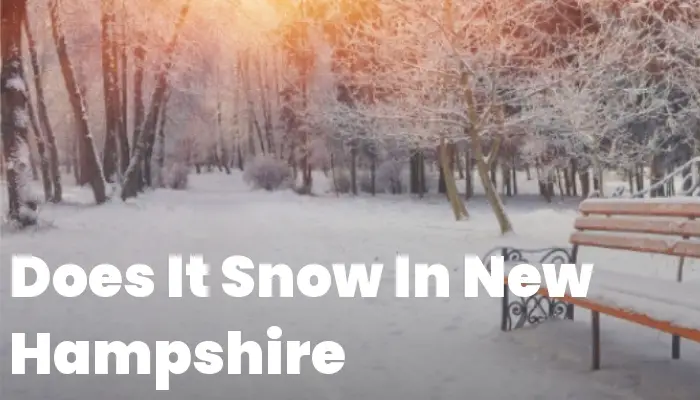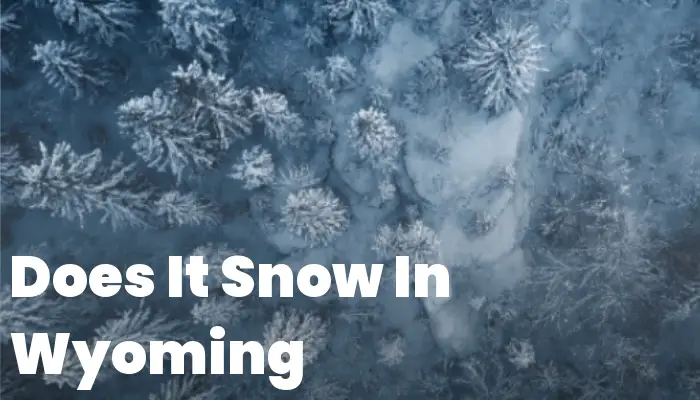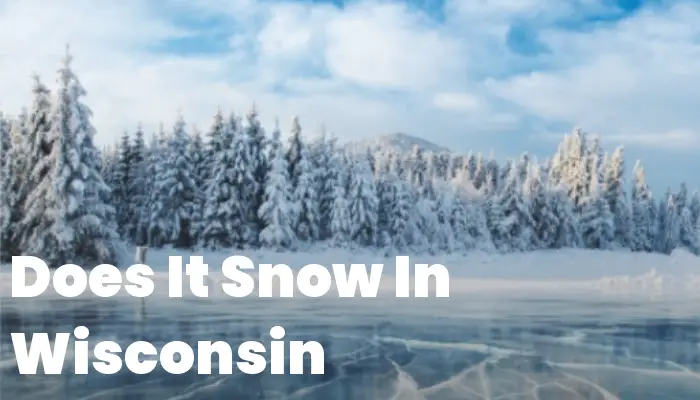Curious about the climate in the Granite State? Ever asked yourself, “Does it snow in New Hampshire?” Stay tuned as we delve into exploring New Hampshire’s seasonal patterns, its breathtaking winter landscapes, and how residents adapt to the snowy months.
From discussing average snowfall to highlighting some of the most beautiful winter spots, this article will offer insights into what you can expect when visiting or moving to New Hampshire during its coldest season. So get your mittens ready and join us on this wintry exploration!
Does It Snow In New Hampshire?
If you’re contemplating a winter visit to New Hampshire or considering making the Granite State your home, one question that might cross your mind is, “Does it snow in New Hampshire?” The short answer is a resounding yes! Located in the northeastern United States, New Hampshire experiences a humid continental climate with cold, snowy winters and warm, humid summers.
Snowfall is an integral part of New Hampshire’s seasonal charm and has a significant impact on the state’s culture and lifestyle. From late November through early April, snow graces much of the state with its white blanket, transforming landscapes into winter wonderlands. Winter sports enthusiasts flock to the region to take advantage of skiing, snowboarding, and snowshoeing opportunities.
How Much Does It Snow In New Hampshire?
So now that we’ve established that snow is no stranger to this part of America—how much does it actually snow in New Hampshire? The answer varies greatly depending on which part of the state you’re in.
Inland areas, especially those at higher elevations like the White Mountains region, can receive substantial amounts of snow—often exceeding 100 inches annually. The more mountainous regions are known for their prolonged and heavy snowfall which attracts ski enthusiasts from all over.
The coastal regions experience milder winters due to their proximity to the Atlantic Ocean; however, it’s not uncommon for these areas to receive up to 60 inches of snow spread across multiple storms during winter months. Meanwhile, Concord, the state capital located in south-central New Hampshire receives about 60-70 inches of snow per year on average.
Regardless of where you are in New Hampshire during winter months, be prepared for snowy conditions. This means packing appropriate clothing if you’re visiting or having proper equipment such as shovels or a reliable means for heating your home if residing there.
Are There Ice Storms In New Hampshire?
Alongside picturesque snowy landscapes comes another aspect of winter weather that residents must deal with: ice storms. Indeed,New Hampshire does experience ice storms, particularly when warm air layers override colder surface temperatures—resulting in rain that freezes upon contact with surfaces such as trees, power lines, roads and vehicles.
These glazing events can create beautiful yet treacherous conditions as branches glisten like glass sculptures while roads become slippery hazards.The most notable was perhaps The Ice Storm Of December 2008, which caused widespread damage and left hundreds of thousands without power—some for several weeks.
To combat these icy assaults,New Hampshirites are resilient. They keep abreast with weather forecasts during colder months; cities and towns maintain fleets of salt trucks and plows ready at a moment’s notice; residents often own generators as insurance against power outages.e safety measures such as salted roads.
When it comes to understanding winter weather patterns in the United States, it’s interesting to compare different regions. Does It Snow In New Hampshire is a common question asked by many, as this small New England state experiences a significant amount of snowfall every year. In comparison, states like New Jersey, New Mexico, and New York witness varying degrees of snowfall depending on their geographical location and prevailing weather conditions during winter.
While both New Jersey and New York experience snow during winter, the amount is typically less than that in New Hampshire. On the other hand, snowfall in New Mexico is significantly less frequent due to its southwestern location and drier climate.
The story changes as we head further south to North Carolina, where snowfall can be quite sporadic with some regions seeing more wintry precipitation than others. Comparing these various states provides fascinating insights into America’s diverse climatic conditions and emphasizes the complexity of predicting precise weather patterns across different regions.
Where Does It Snow In New Hampshire?
New Hampshire’s geography plays a pivotal role in determining where snowfall occurs and in what quantities. The state can be broadly categorized into various topographical zones: the Great North Woods, the White Mountains, the Lakes Region, the Seacoast, and the Merrimack Valley.
The Great North Woods, located at New Hampshire’s northernmost reaches, is known for its snowy and extended winters. This area typically sees higher snowfall totals due to its latitude and elevation. If you’re searching for a quiet winter retreat or snowmobiling adventures, this is one of the prime snowy locales.
Next up are the White Mountains. These peaks host some of the state’s most famous ski resorts such as Bretton Woods, Loon Mountain, and Wildcat Mountain. The White Mountains not only receive a significant amount of natural snowfall but also utilize extensive snowmaking to ensure good skiing conditions throughout the season.
The Lakes Region, although lower in elevation than the White Mountains, still receives an ample amount of snow that blankets lakes like Winnipesaukee with ice thick enough for activities such as ice fishing or skating.
Moving eastward towards the Seacoast, which includes cities like Portsmouth, snowfall amounts decrease somewhat due to moderating effects from the Atlantic Ocean. However, it can still experience intense nor’easters that bring heavy accumulations at times.
Lastly, Merrimack Valley, which houses Concord and Nashua among other populous cities and towns, experiences variable winter weather but certainly gets its fair share of snowy days with a typical annual accumulation similar to Concord’s 60-70 inches mentioned earlier.
New Hampshire Roads and Winter Weather Conditions
Navigating through New Hampshire during winter months requires skills adapted to varying conditions. The state government recognizes this challenge by implementing robust winter road maintenance programs.
State highways and major roads are promptly plowed by Department of Transportation (DOT) crews who work tirelessly to clear roads during storms. They apply salt or other eco-friendly agents for de-icing purposes—a practice essential in keeping roads passable as temperatures fluctuate around freezing points.
Local municipalities also play their part by ensuring neighborhoods stay accessible. Towns have their own operations aimed at making residential streets safe during stormy weather. Moreover,e usage of winter tires or chains is recommended,bly mandated on certain roadways when conditions warrant.
How Cold Does It Get In New Hampshire?
The mercury can plunge quite low in New Hampshire during winter months—making it essential for residents and visitors alike to be prepared for cold temperatures.
In general,northwestern parts encounter colder temperatures bpart due to their distance from maritime influences along with higher altitudes.
New Hampshire, known for its picturesque winters and ski-friendly climate, experiences snowfall across various cities. For instance, in Manchester, snow can transform the cityscape into a winter wonderland, attracting tourists and locals alike to engage in seasonal activities. Similarly, Nashua also witnesses a considerable amount of snowfall that can affect daily life and travel plans.
Moving north to the state capital, one might wonder about the snowy months in Concord. Here, the cold weather brings not only a blanket of white but also the need for frequent plowing and shoveling. In contrast to these inland cities, coastal areas like Dover receive snow as well but with slightly different patterns due to their proximity to the Atlantic Ocean.
Lastly, turning our attention towards Rochester, snowfall here contributes significantly to New Hampshire’s reputation for cold weather sports such as skiing and snowboarding. Understanding and anticipating these snowy conditions is crucial for residents and travelers planning to navigate through New Hampshire’s winter season.
Winter Activities In New Hampshire
When the snow blankets the landscape, New Hampshire transforms into a playground for winter activities. The state offers a plethora of options to enjoy the snowy season, catering to people of all interests and ages.
Skiing and snowboarding take center stage in areas like the White Mountains, with numerous resorts that provide slopes for all skill levels. Beyond traditional downhill skiing, cross-country skiing trails are abundant; many state parks offer groomed paths through picturesque forests.
For those who prefer a more leisurely pace, snowshoeing is a fantastic way to explore the serene beauty of New Hampshire’s winters. Traversing the quiet woods on snowshoes can be both an invigorating workout and a peaceful retreat from the hustle of everyday life.
Snowmobiling is another popular activity, especially in the Great North Woods region, where an extensive network of trails beckons adventure-seekers. These well-maintained trails offer access to some remote areas that are otherwise difficult to reach during winter.
Ice fishing enthusiasts drill their holes in frozen lakes such as Lake Winnipesaukee, hoping to catch their next big story along with fish beneath the ice. Meanwhile, community ice skating rinks come alive with families enjoying time together gliding across the icy surfaces.
Festivals and Events
Winter brings not just sports but also cultural enjoyment through various festivities throughout New Hampshire. Towns like North Conway host winter carnivals featuring ice sculpture competitions,sled races, and other family-friendly activities that celebrate the region’s wintry spirit.
Winter Traveling In New Hampshire
Travel through New Hampshire during winter can be breathtaking but demands respect for weather conditions and preparation. It’s crucial for travelers to keep updated on weather forecasts before making trips and equip their vehicles appropriately.
The state’s infrastructure is well adapted for snowy conditions with efficient storm response from DOT crews ensuring main roads remain clear. However,rural or less traveled roads may take longer to plow,bvisiting such areas requires extra caution.


